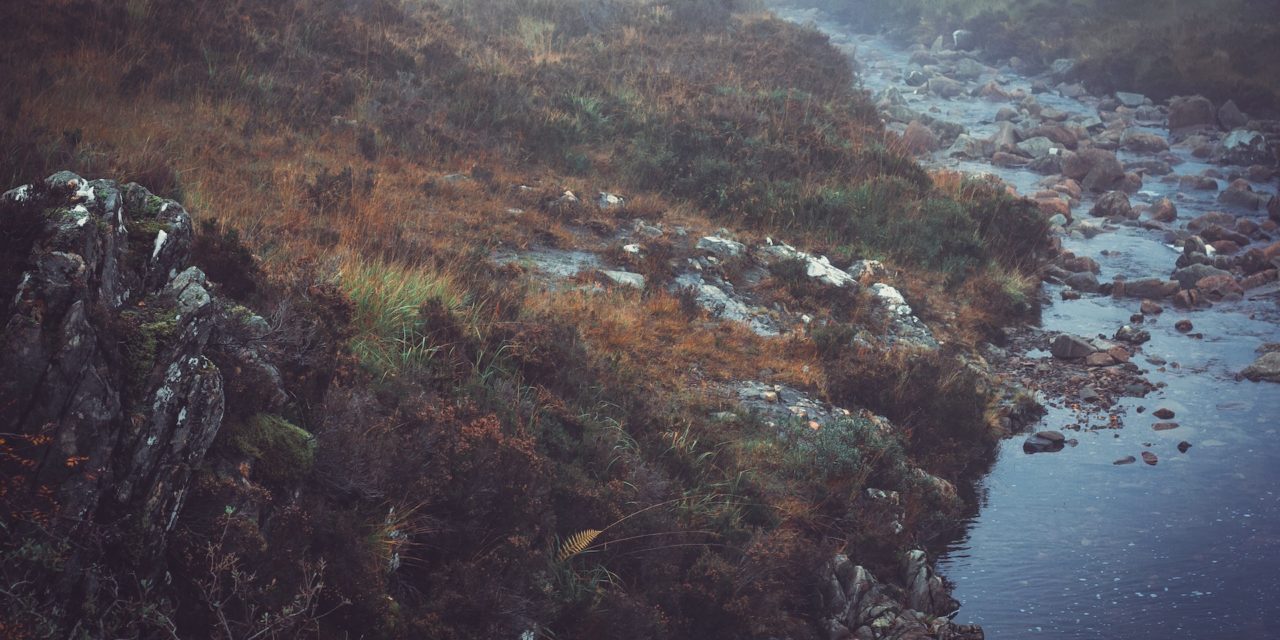This article is republished with permission from The Ecological Disciple. Visit their website to read more about “learn[ing] to follow Jesus from the ground up.”
For the earnest ecological disciple seeking sources of inspiration, a rich cache can be found in the poetry of the Victorian Jesuit Gerard Manley Hopkins (1844-1889). Light-years ahead of his own time in terms of poetic craft, Hopkins wrote moving poems advocating for the care and preservation of the natural world, a realm in which he experienced direct mystical encounters with the living reality of Christ. His work remained largely unpublished until 30 years after his death. But when his work finally blossomed into public view in 1918, the world hailed this idiosyncratic poet as a powerful champion of nature’s fragile beauty.
Poems like “Binsey Poplars” and “God’s Grandeur” are classic must-reads for the ecological disciple. One of his less well-known poems along this vein is entitled “Inversnaid.” In this poem we experience Hopkins’ uncanny ability to describe a scene in nature with exquisite, sonorous imagery. He is exploring a stream winding its way along the east bank of Loch Lomond in Scotland in 1881. The rapture of his experience births this ecstatic poem which yields a passionate plea, the substance of which forms the focus of this blog post. First, the poem in its entirety:
This darksome burn, horseback brown,
His rollrock highroad roaring down,
In coop and in comb the fleece of his foam
Flutes and low to the lake falls home.
A windpuff-bonnet of fáwn-fróth
Turns and twindles over the broth
Of a pool so pitchblack, féll-frówning,
It rounds and rounds Despair to drowning.
Degged with dew, dappled with dew
Are the groins of the braes that the brook treads through,
Wiry heathpacks, flitches of fern,
And the beadbonny ash that sits over the burn.
What would the world be, once bereft
Of wet and of wildness? Let them be left,
O let them be left, wildness and wet;
Long live the weeds and the wilderness yet.¹
This poem is best experienced by reading it out loud. Try it and feel the rhythms and the play of the rhymes and the sound patterns. Follow in your mind’s eye the foam in the water as it rides down the rollicking stream and stalls spinning in a dark, shaded pool. Visualize the shrubland habitat of the moorland Scottish landscape.
The poem’s power leaps to life in the passionate pleading of the final lines: Let them be left, O let them be left, wildness and wet! It is this very plea that poses the existential challenge for me: what is the right balance between ordering the natural world and allowing the wild to be left to itself? When do we pull weeds and when do we celebrate them? Even more, who gets to determine what a “weed” is?
We have a cabin on a 5-acre wetland plot in southwest Washington. Our property sits in a valley with a stream running through it toward a beaver pond in the back. We are surrounded by a wild and wet wilderness of alder, cedar, fir, sword fern, lady fern, skunk cabbage, foxglove, cinquefoil, trillium, nightshade, daisy, buttercup, hostas, and red elderberry. These are my flora friends.
Yet we also host thistle, nettle, dandelions, devil’s club, salmonberries, and most notorious of all, the Himalayan blackberry, a non-native invasive species that is the undisputed bully of our woods with its thorn-lined tentacles grabbing, slithering, and lengthening as it were by the hour. As I don’t live there full-time, my battle against these antagonists often feels like the movie Groundhog Day. I turn around and the voracious growth has already covered the ground I had just cleared. The wildness of the woods is simply relentless.
In trying to find the right balance between imposing order on the world and letting the world determine its own natural course, I find myself asking three questions. First, does either side constitute a greater beauty? I find beauty in both the wild and the cultivated and, what’s more, a heightened kind of beauty at the borderline between the two.
Second, what tools am I allowed to use in the curbing of the wild? As I see the futility of my hard work again and again, I am tempted to use the shortcuts of chemicals and herbicides, traps, tricks, and tractors. But my growing ecological discipleship is sensitizing me to choose tools that will ensure that my cultivating work does not jeopardize the wildness around me.
Third, how do I respond to the inevitable clash of the cultivated and the wild? When moles push their little mountain ranges across my lawn, how do I bargain with them to respect my boundaries? When the beavers start chewing on the alders along the stream, how do I persuade them to be good neighbors and chew on the fallen trees and branches instead? Do I allow the pollinating bees welcome access to our yard but trap and spray the yellowjackets? Who can I label as my enemy as I attempt to keep peace between the kingdoms of the wilderness and the manicured?
I want Hopkins to be proud of my choices. Even more, I want God to smile down on my stewardship of these beautiful acres of weeds and wilderness that He has given me as a gift. These tensions I encounter as a measured cultivator make me long for the day when the world will be renewed, when the lion and the lamb will lie down together, when the thorns introduced into Eden will be forever banished. Until then I labor in the twilight, celebrating the wonder of the careful flowerbeds of lupine, aster, rosy spirea, and white hooker’s fairy bells all underneath the wild alders and large-leaf maples, shaking their terrible heads in the wild freedom of the woods.
¹Admittedly Hopkins employs a bunch of unusual words. A simple glossary may help:
Burn: a stream and surrounding banks (Scottish)
Rollrock: (original) the steep incline that a rock could roll down
Coop and comb: bunched up and spreading out
Flutes: grooves and divides
Windpuff-bonnet of fawn-froth: a thin brownish foam fragment
Twindles: (anyone’s guess) spins, rotates
Fell-frowning: the water in the shadow of the hill (fell)
Degged: sprinkled (Scottish)
Braes: hills (Scottish)
Heathpacks: shrub clumps
Flitches: strands, fronds
Beadbonny: (original) beautiful (bonny) berries (beads)
Cover photo credit: Anna Saveleva


